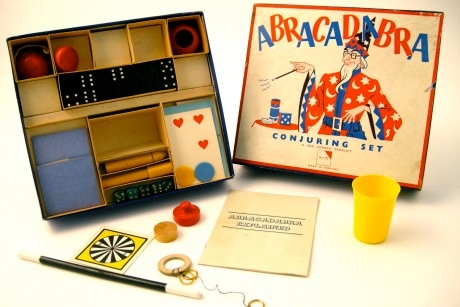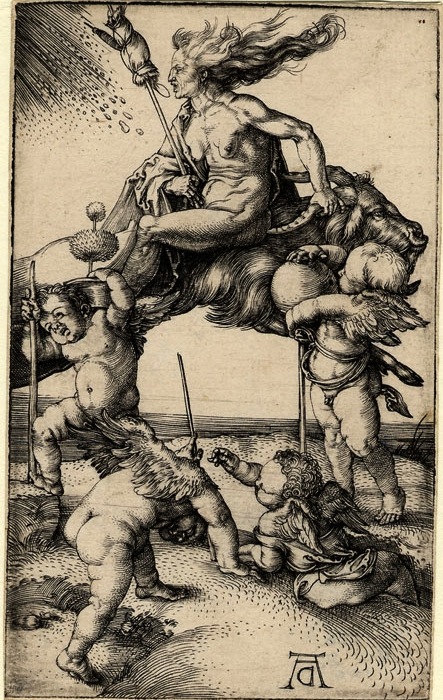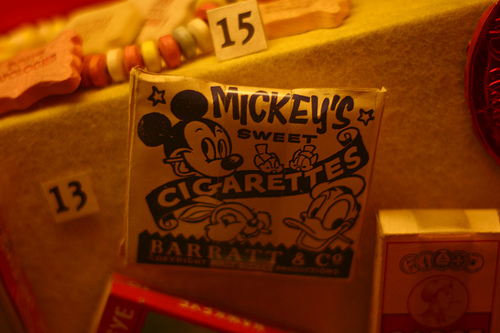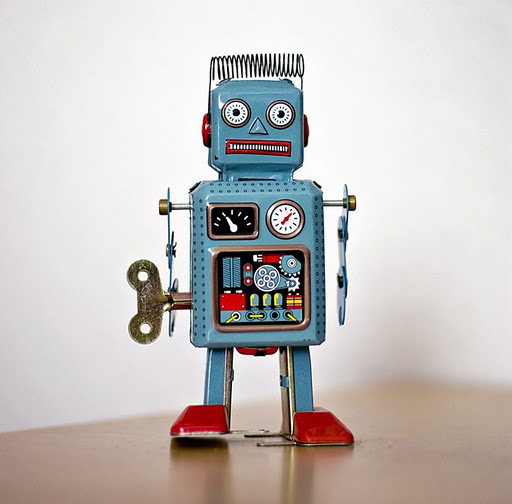There is the theory of Walter Benjamin on the discarded object, the former fetish object of capitalist consumer culture that becomes re-animated and re-contextualized after attaining junk and discard status. Transformed into a toy. It becomes re-emancipated with revolutionary potential in the hands of a child and its color and form speak a specific and personal grammatical language according to Wittgenstein. The Benjamin critique is decidedly from the deep end of the left pool and although plausible, and at the least fascinating and entertaining- though Benjamin was not known as a song and dance man- it makes an underlying assumption on the object having no value.

Jones:It shows the ways magical beliefs become magical fictions, how fairytales evolved into fantasy literature, and how real superstition merges into conjuring tricks. Another fascinating exhibit is a 16th-century book on witchcraft that includes a depiction of the fairground trick known as the beheading of John the Baptist – a Tudor version of the modern magic trick of the assistant sawn in half. Read More:http://www.guardian.co.uk/artanddesign/jonathanjonesblog/2011/oct/31/magic-worlds-museum-of-childhood image:http://www.groupleisure.com/News/Latest-News/Magic-Worlds-revealed-at-the-Museum-of-Childhood
No exchange value therefore outside the loop of consumer desire. However, even as a child we are able to distinguish what has value and what has not, as there is a pre-determinism at work in that the better objects are never or rarely discarded, but rather handed down or sold or at a minor level of bourgeois values, redeemed in a garage sale or church bazaar or lower down at the goodwill and thrift. Even when given “free” there is an elment of social capital involved. Benjamins properties of the “magic” seem to preclude the buy and sell haggling over marginally better than rubbish, which was never a fetish object to begin with. A more realistic and valid template for his theory may have been in Marcel Duchamp’s ready-mades and other end of art objects like a Damien Hirst ashtray with or without contents. Urinals, broken stools, shards of glass ,linoleum flooring, auto scrap, construction waste etc. may be more fulfilling and symbolic of conspicuous waste, the linchpin of capitalism, than the kind of nifty toys and children’s goods one would find at the Museum of Childhood.

Read More:http://salmagundi.heracliteanfire.net/post/1441608900/a-witch-riding-backwards-on-a-goat-with-four ---A witch riding backwards on a goat, with four putti carrying an alchemist’s pot, a thorn apple plant. Albrecht Dürer, c.1500 (British Museum)---
…[e]very childhood achieves something great and irreplaceable for humanity. By the interest it takes in technological phenomena, by the curiosity it displays before any sort of invention and machinery, every childhood binds the accomplishments of technology to the old worlds of symbol.
These two statements—the first about the ‘magical force’ of ‘the child’s world and ways’, the second about the ‘great and irreplaceable’ achievement of children and their capacity to reconcile modern technology and ancient symbolism—point to the powerful example Benjamin saw in the toddler’s interaction with the objects of the world (‘messy antics’ as we will call them). Children approach the objects of the world as things imbued with remarkable—indeed revolutionary—possibilities. For children, the most valuable objects are the very things that adults consider useless trash.Read More:http://www.janushead.org/11-1/MellamphyandMellamphy.pdf a

Read More:http://writingya.blogspot.com/2008/03/field-trip-museum-of-childhood.html --I found a game called "The Reward of Virtue," which was sort of a horrifying exercise in guilt, created in 1801. Players could be derided as truants, pigs, mice, misers, fortune-tellers and peacocks and more, and the rhyming couplets of descriptions made it even more entertaining. I much preferred the covers of "Little Pets" and other gorgeously illustrated children's picture books. This instructive almanac likely came with the same moral poetry, but there is a certain amount of charm in the cover illustration that makes it forgivable.--- Read More:
What is less clear or self-evident is how children, the process involved, are able to tap into the sometimes dark, occasionally fantastic world of folklore and superstition and come up with either new paradigms for understanding- unlocking the past as key to the future- or become or accelerate the tendencies of traumatism and obsession, the early stage of ego derailment where these traditions create the space for both tyrants and angels to exist within the culture of childhood.
…The world and language of children stood as a kind of prototype or model (or rather potential reality) for the historian’s search for the ‘matter’
of history. For one thing, hidden within the child’s fascination for discarded, forgotten objects was a radical openness to and consciousness of the objects themselves. Benjamin argued that the historical materialist, too, must take up what has been left behind, examine it—explore it—and engage it as an active thing; ‘activate’ it, ‘animate’ it, breathe ‘life’ back into it (or allow its life to breathe onto/into ours). The materialist historian, like the infant, must open herself up to the historical possibilities of the object at hand.
The significant point for Benjamin is that, in having been forgotten, the discarded object nonetheless continues to exist apart from the continuum of progressive historical time. In being discarded, the object that had once been a part of the historical process as a reified or fetishized commodity, dies a social death; but it is precisely at the juncture in which it exists as a ‘has-been’ that its potential to reveal the ‘not-yet’ emerges (its chance to be ‘born[e] again’). This two-fold movement opens up within the object itself, and therefore it points to two dimensions: on the one hand, as an extinct and bygone object it is able to demystify the structure of progressive history by exposing its ‘mythic’ dimension….
ption aligncenter" style="width: 522px">

---Read More:http://www.myglobalpage.com/creations/13-vintage-toys









 COMMENTS
COMMENTS



